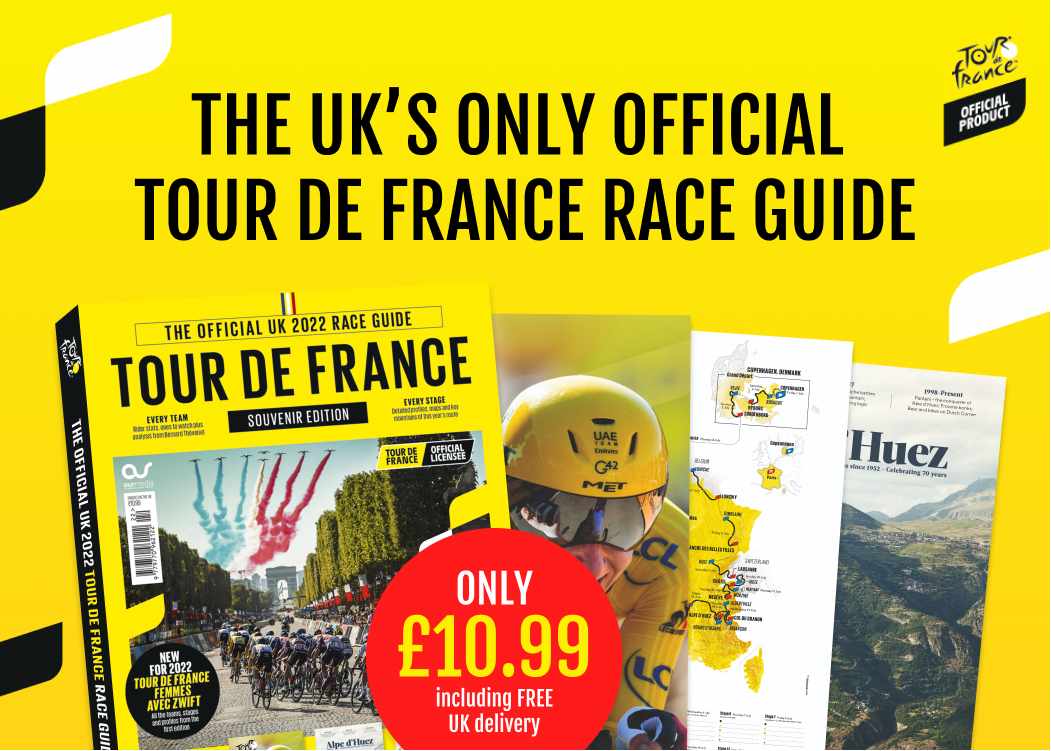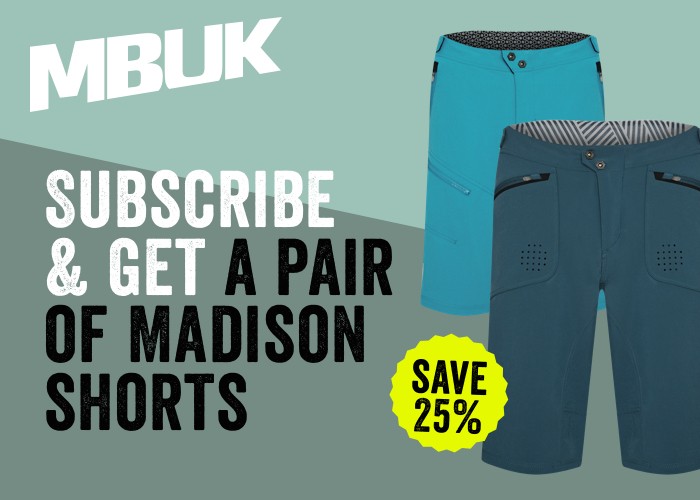How to create the perfect bikepacking bike for your ride
Choosing your ultimate bikepacking rig or upgrading your bike? Here’s what you should consider

Published:
Loading up your bike with everything you need and heading off to explore somewhere new: bikepacking can be one of the most rewarding and empowering ways to travel.
Whether you’re riding into the sunset on the open road, or heading off-road on an adventure into the wilderness, here’s what you need to look for when dreaming up the bikepacking bike for your ride – or looking to adapt your current setup.
What is a bikepacking bike?
In short, any bike can be a bikepacking bike.
In fact, that’s one of the joys of bikepacking. You can strap bikepacking bags to just about anything before heading out on an adventure.
However, certain features and choices can help make a bike better suited for multi-day touring, whether that’s something fundamental such as geometry, or tyre and component selection.
Indeed, while it’s true that some bikes are designed specifically with bikepacking in mind, with lots of mounting points for luggage, for example, with some careful tweaking, you can also adapt your current bike to be better prepared for your upcoming ride.
Tyres, tyres, tyres

Why are we starting with tyres? Well, just as with gravel riding, and indeed mountain biking, tyres are one of the most important things you need to consider when bikepacking.
What tyres you can choose will be partly dictated by the type of bike you plan on riding. While the latest road bikes often have clearance for 32mm tyres – with wider tyres an option on endurance road bikes or all-road bikes with additional clearance – if you want really plush rubber then you’ll need a gravel bike or mountain bike.
Ideally, you want something that’s durable and resistant to puncturing, with a width and tread pattern suited to the terrain you’re likely to encounter en-route.
Tubeless tyres come highly recommended for off-road bikepacking. This helps to reduce punctures from thorns or sharp stones on the trail, and also enables you to run slightly lower tyre pressures with less risk of pinch punctures.

Be careful here, though: you can still cause a snakebite puncture in the tyre itself with a tubeless setup. Read our guide to the best mountain bike tyres for our pick of the bunch, while the best tubeless tyres for road riding will also help stave off punctures for fast bikepacking adventures on tarmac.
Wider gravel bike tyres often strike an ideal balance for multi-terrain bikepacking, combining a fair amount of speed on the road with comfort and, with the right tread pattern, off-road grip. The increased volume will enable you to run lower pressures than skinnier tyres, which will be beneficial if you plan on spending a long time on your bike.
Make sure you research the terrain on your route and match the tyre and tread type accordingly, depending on how rough or smooth you anticipate the tour to be. On top of that, consider what weather and trail conditions you’re likely to face. Bone-dry roads or trails in summer can become running rivers in a storm or through winter.
Fit and geometry

Bikepacking-oriented bikes, whether that’s a versatile gravel bike with generous tyre clearance and lots of mounts, or a rugged off-road tourer designed specifically for bikepacking, tend to feature a more upright position than race-focused bikes.
That should give a greater degree of comfort on long rides, placing the rider in a more upright position by using shorter top tubes and longer head tubes.
Meanwhile, a longer wheelbase and slacker head tube help to prevent toe overlap, and crucially give a more stable ride feel over rougher terrain, which becomes even more important when it comes to loading up with bikepacking bags.
However, chances are you can also tweak your bike position on your current ride, if you’re planning on heading out for a long bikepacking trip where comfort is more important than all-out speed, most commonly by raising the handlebar height.
Handlebars and cockpit

Hand, wrist and shoulder comfort become really important when you spend many hours in the saddle, especially over multi-day rides.
Although traditional drop-bar setups give multiple hand positions (on the tops, on the drops, on the hoods), some ultra-endurance riders add clip-on aero bars to offer even more positions and help prevent any discomfort.
Flared gravel bike handlebars, where the drops are wider than the tops, are also popular for bikepacking. This not only gives a wider, more stable position for descending, but also grants you a little more space between the bars for bikepacking bags.

If you’re using a bike with flat bars, such as a mountain bike or hybrid, you might want to consider both the shape of your bars and adding more hand positions.
Check out flat handlebar options with more sweep, which put your wrists into a more ergonomic position, and greater rise for a more upright position. This can not only make you more comfortable, but also give you more clearance over the front tyre for handlebar bags.

Different-shaped bars, such as the Jones H-Bar, give multiple hand positions as well as bag, light and GPS bike computer mounting options.
If you’d like more space for mounting gadgets, consider handlebar accessory mounts such as those from Velo Orange or Nitto.

Bar ends can also help to add more hand positions to flat bars, and can be sourced either as a stand-alone item or integrated into ergonomic grips, such as those from Ergon.
Mounts galore

Frame and fork mounts are all the rage right now, enabling you to add racks, cargo cages and bags all over your frame, giving you greater versatility when it comes to your setup.
In addition to two pairs of bottle cage bosses in the main triangle, you can often now find these under the down tube, on the top tube and on the fork legs.

These additional mounting points are most common on gravel bikes and machines designed specifically for bikepacking, such as the Surly Ghost Grappler, though some endurance road bikes, such as the new Canyon Endurace, are also adding this additional versatility.
Then there are also the rack and mudguard mounts commonly found on winter road bikes and hybrids.

If you’re planning on heading somewhere remote, where you’ll need to carry more kit or water, fork mounts are a good idea for giving you extra capacity. These are also really handy for shorter riders, where space between the bars and under the saddle may be limited.
However, if your frame and fork have no mounts whatsoever, then fear not. The whole point of bikepacking is that you can strap on bags without the need for mounts.
Frame material

Because you can use any bike for bikepacking, that goes for any frame material too, although different options will have their benefits and drawbacks.
While carbon fibre bikes are likely to be lighter, which can help marginally as you haul your laden bike up a steep hill, do take note of their maximum system weight recommendations, especially if you think you may exceed this when it comes to adding your loaded bikepacking bags.
The same goes for carbon fibre components, especially seatposts and handlebars. It’s best to check the manufacturer’s recommendations before loading up.
Steel and titanium are often touted as the best materials for bikepacking thanks to their durability, because they’re more likely to be able to withstand the heavy use that bikepacking can entail.

Round-the-world tourers often opt for steel bikes because the frames can be fixed almost anywhere by a welder. Titanium is more tricky here, and more expensive in the first place, although it is more resistant to corrosion than steel.
If you’re planning on running a front rack setup, you’ll need to check the carrying capacity of the fork. Steel forks tend to be better for this than carbon, which can be limited here.
Aluminium frames tend to be more common at the budget end of things. Some say aluminium gives a slightly harsher ride than carbon, titanium or steel, although the latest alloy frames are very good indeed and you’re likely to be able to alleviate a lot of buzz by optimising tyre pressures.
Servicing and maintenance

Depending on where you’re heading, how easy it’ll be to maintain and service your bike is an important consideration. Does your bike use proprietary parts that are only available from select dealers, or are the components easily sourced worldwide?
Some long-distance bike tourers choose cable disc brakes over hydraulic brakes for this reason, because replacing a cable at the side of the trail tends to be easier than bleeding brakes, for example.
On the flip side, hydraulic brakes tend to offer better performance. Ultimately, it’s up to personal preference, your own mechanical capability and where you’re planning on bikepacking.
If you’re planning on putting a huge number of miles through your bikepacking rig, consider how much it’ll cost you to stay on top of the maintenance, too. You might be able to stretch to a top-tier electronic groupset as an initial outlay, but remember that premium parts will need replacing down the line due to wear, and that won’t be cheap.
Gearing

Simply put, you’ll need a wider range of gearing when it comes to loading up and heading out on a bikepacking adventure than you would for your standard day rides. This is because you’ll have to compensate for the extra weight on your bike due to the luggage.
Grinding your way up steep inclines while under-geared is no fun, and your knees won’t thank you for it either, especially if you do the same day after day.
If you’re running a road bike groupset and planning on tackling a hilly route, it’ll be wise to tweak your gearing to make it as easy as possible. This may mean fitting a compact crankset or the widest cassette your rear derailleur can handle.
Current gravel gearing are expanding, with an option from all three of the big groupset brands: Shimano GRX, SRAM XPLR and Campagnolo Ekar. Once again, however, consider what gearing you’re going to need for your ride – and, if you can, be cautious with your gearing setup.

Shimano and SRAM also offer the option of running a mullet drivetrain, pairing road/gravel and mountain bike components for a wider gearing range than what’s possible through a typical gravel-specific setup.
Although a more expensive option, electronic shifting can both help reduce hand and finger fatigue from shifting, and leave more space between the bars for handlebar bags. Just remember to pack the battery charger – and consider the maintenance caveat we mentioned earlier, if you’re heading away from civilisation.
For an ultra-low maintenance drivetrain, as well as a little weight saving, some riders opt to bikepack on singlespeed bikes. It’s not an easy task by any means, and one that takes some practice, too.
Dynamo options

When you head off-grid, electricity can be a limiting factor, because you’ll likely need to charge bike lights, your bike computer, your phone etc. While a battery pack is a handy addition to your bikepacking kit list, a dynamo setup can also help to give you some more power.
At the cost of a little extra weight and resistance, a dynamo hub can translate kinetic energy from your ride to electric energy, which can be used to power fixed lights or charge items via a USB port.
This can be super-handy on longer tours, or even on commutes if you’re prone to forgetting to charge your lights in the winter (guilty).
Do bear in mind that different dynamos are designed to work effectively at different speeds, so you’ll need to match that to your anticipated ride. If you’re heading off-road on technical terrain, for example, the speed is likely to be much lower, which may limit the setup’s capability.
Think about whether you’ll need internal dynamo routing, such as on the Fairlight Faran 2.0, and where you’ll mount lights or charging ports.
Suspension

For more technical, MTB-orientated bikepacking routes such as the Highland 550 or the Colorado Trail, employing a little suspension is often a good idea. Hardtail mountain bikes or lightweight cross-country bikes tend to work best, as you’re probably not going to encounter super-technical terrain on a bikepacking ride.
The key point here is that you’ll need to alter your suspension setup, adding pressure to compensate for the additional weight of your luggage so that you don’t risk damaging your fork and/or shock.
It’s also a really good idea (as with any bike setup) to go for a test ride before your trip, to make sure that all your bikepacking bags are compatible with the bike when you use the suspension.
Pedals

The pedals you’ll use for your bikepacking trip really comes down to personal preference, but also the nature of your plans.
If you’re going for a more casual tour and want to take in some cultural sites while bikepacking, you might prefer flat pedals vs clipless because you can hop straight off the bike and wander around town in casual shoes.

However, if long, tough days are on the cards, then efficiency might be more of a priority for you, so clipless-style mountain bike pedals might be a wiser choice. You can still walk around in mountain bike shoes, whereas road cycling shoes make this much harder, due to the exposed cleat.
Platform clipless pedals, or trail pedals, are also a good idea if you’d like to clip in, but tend to suffer from hotspots on your feet during long rides.
Saddles
Finding the right saddle for you is an incredibly personal topic, and something that we’ve delved into in a lot more detail in our buyer’s guide to saddles.
Saddle sores are also the bikepacker’s number one enemy, so taking time to get saddle choice right is crucial.
Be mindful that, due to the altered body position, what works for you on other bikes might not work best for you on a bikepacking bike over the course of many rides.
Considerations for shorter riders

With smaller frames and tighter clearances, shorter riders are often left puzzling how to fit bikepacking bags to their steeds. N
arrow handlebars limit bar-bag capacity, as well as reduced clearance over the front wheel due to shorter head tubes; shorter seatposts give less room over the rear tyre for seatpost bags, and let’s not even mention how small those main triangles can be.
In some cases, smaller-capacity bike bags can help to make the most of these smaller spaces, but combined are unlikely to give you enough space for a full range of bikepacking gear on longer trips.

Fork-mounted luggage such as cargo cages with dry bags, or fork-specific bikepacking bags, can help add capacity, or give you space to store water bottles if you’re running a frame bag.
In extreme cases, you may be forced to adopt a rack setup: with either a conventional bolt-on rack and panniers, or a more novel approach such as the Tailfin rack system.




